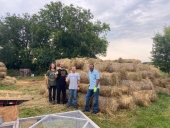








Xisca - pics! Dry subtropical Mediterranean - My project
However loud I tell it, this is never a truth, only my experience...
 1
1




Iterations are fine, we don't have to be perfect
My 2nd Location:Florida HardinessZone:10 AHS:10 GDD:8500 Rainfall:2in/mth winter, 8in/mth summer, Soil:Sand pH8 Flat




Xisca - pics! Dry subtropical Mediterranean - My project
However loud I tell it, this is never a truth, only my experience...
 1
1








Xisca Nicolas wrote:So I would like to know about what sells in other terms and about % of the income:
- % Food selling compared to other products (like courses, coaching etc)
- About food: only untransformed products or what % of processed food (dry, preserves, oil...)
- % of plants and animals in the sold products?
Xisca - pics! Dry subtropical Mediterranean - My project
However loud I tell it, this is never a truth, only my experience...








Brenda
Bloom where you are planted.
http://restfultrailsfoodforestgarden.blogspot.com/




Xisca - pics! Dry subtropical Mediterranean - My project
However loud I tell it, this is never a truth, only my experience...




Xisca - pics! Dry subtropical Mediterranean - My project
However loud I tell it, this is never a truth, only my experience...




Mark Shepard wrote:
Yes... We have a "profitable" Permaculture farm, but it ain't the gravy train... It's a strange mix of incomes, but it's what works..
Mark Shepard wrote:For every book sold through Amazon I make a grand total of $1.50.

|
Gravity is a harsh mistress. But this tiny ad is pretty easy to deal with:
Rocket Mass Heater Resources Wiki
https://permies.com/w/rmh-resources
|






